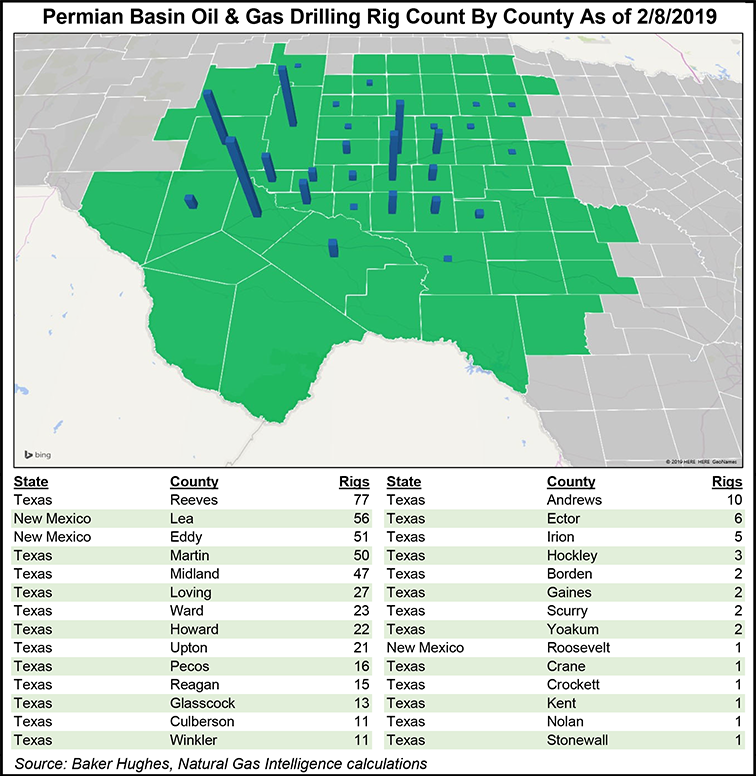E&P | NGI All News Access | Permian Basin | Regulatory
E&Ps Asked to Lower Lights in Permian as Stars at Night Not Big and Bright
To preserve the dark skies necessary for the University of Texas McDonald Observatory in the Davis Mountains of West Texas, a collaborative group is recommending operators lower the lights.

The updated notice to operators issued by the Railroad Commission of Texas (RRC) follows a joint effort by the McDonald Observatory, Permian Basin Petroleum Association, Texas Oil and Gas Association and the American Petroleum Institute.
The light originating from exploration and production (E&P) equipment in the Permian has escalated, and since 2010, development associated with the exponential growth of drilling and production has generated light reflecting off the sky.
Astronomers at the state-of-the-art observatory focus on measuring objects at the very edge of the observable universe.
“Without mitigation, the gleam of light from oil and gas operations could compromise the research for which the McDonald Observatory is famous,” the RRC noted.
The observatory also is soon to complete a major upgrade to its historic Hobby-Eberle telescope.
“If a solution to bright skies is found, the upgrade will allow three-dimensional glimpses deep into the universe,” regulators noted.
The Texas Legislature in 2011 revised the local government code, Section 240.032 to require a county commissioners court, any part of which is within 57 miles of the McDonald Observatory, to adopt orders regulating the installation and use of outdoor lighting in any unincorporated territory of the county.
The counties where the requirement applies are Brewster, Culberson, Hudspeth, Jeff Davis, Pecos, Presidio, and Reeves, many of which have E&P activity ongoing.
In addition, the observatory is working with its neighbors to promote simple solutions to minimize lighting impacts.
Pioneer Energy Services’ Stacy Locke and the observatory’s Bill Wren wrote how “Oilfield Lighting Can Coexist with Dark Skies,” which is available on the observatory’s website, and there is general information about the observatory’s Dark Skies Initiative available.
“The solutions can be simple and cost effective and can actually improve nighttime visibility and increase worker safety,” the RRC noted.
© 2024 Natural Gas Intelligence. All rights reserved.
ISSN © 2577-9877 | ISSN © 2158-8023 |
